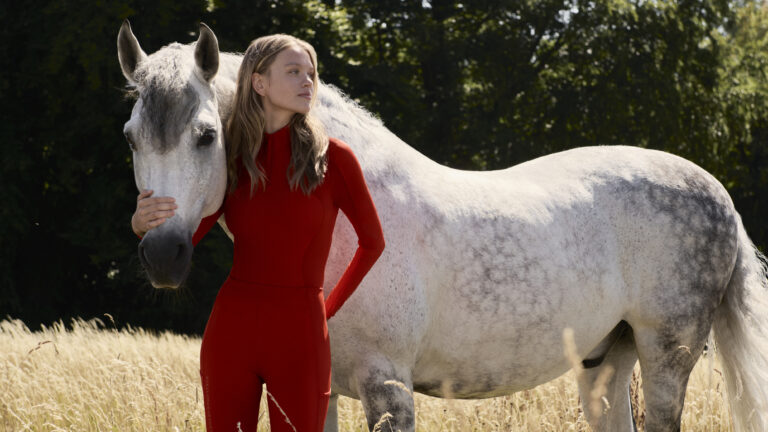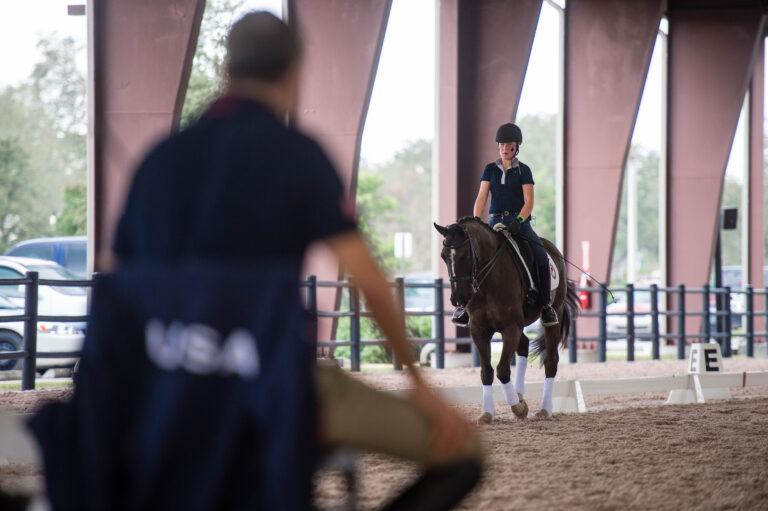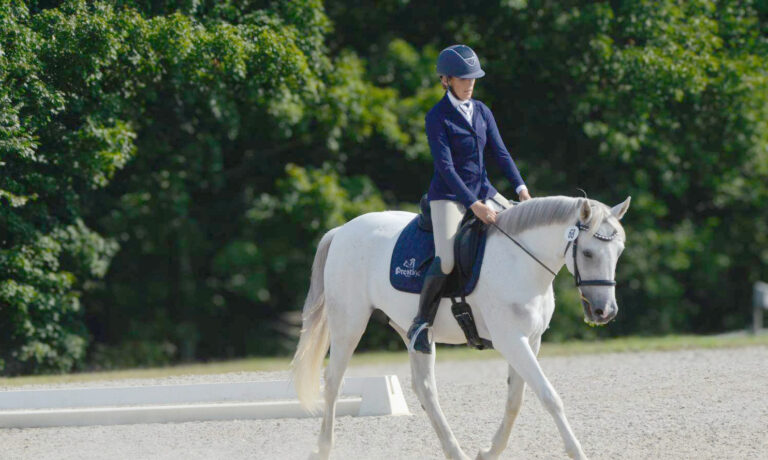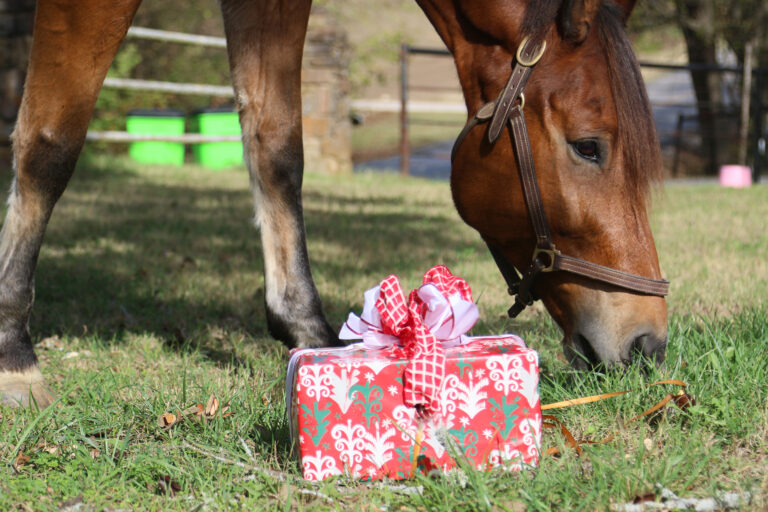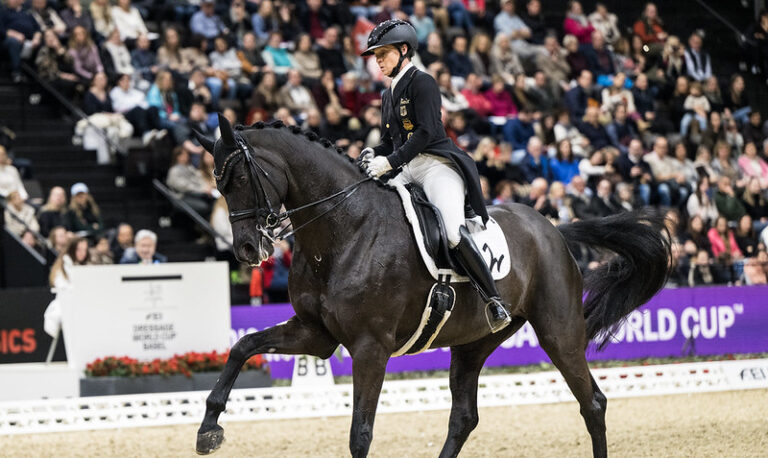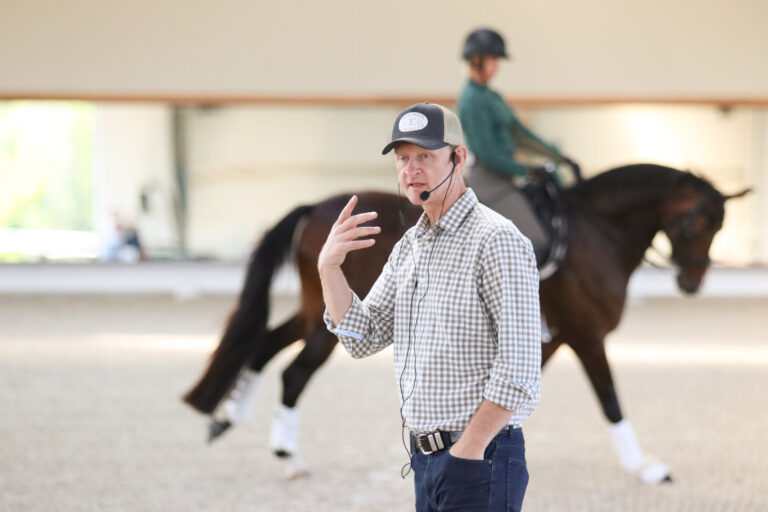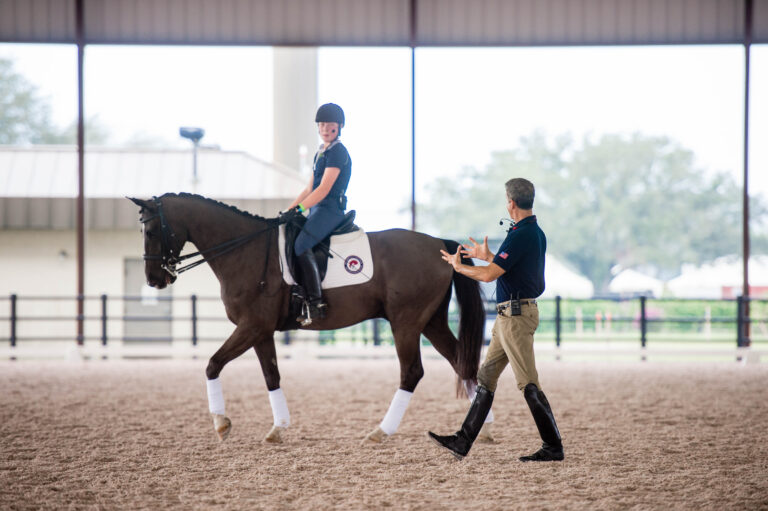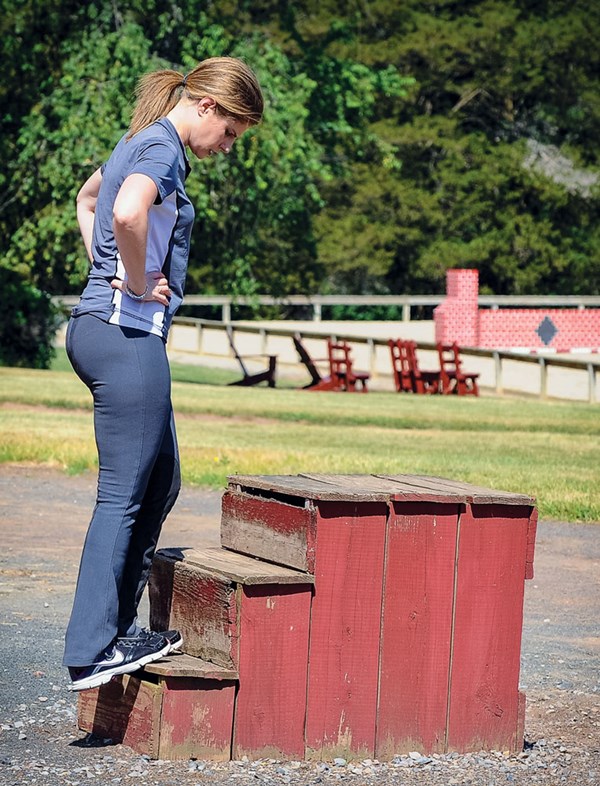Shopping for a horse can be one of the most exciting yet frustrating endeavors that dressage riders face, and a surprisingly challenging aspect of the journey to finding a new mount can be simply figuring out where to look. In Part 1, DT looked at the advantages (and disadvantages) of horse shopping in Europe. (Click here to read it.) This month, we’ll examine the pros and cons of staying closer to home here in the United States.

As outlined in the first segment of this series, for many dressage riders and owners looking for a new horse, the draw of Europe is irresistible, and generations of competitors have experienced a great deal of success importing mounts to the United States. But for many equestrians, staying close to home and concentrating their horse-shopping efforts right here in America have been another successful way to find a new dressage partner. “My first inclination is almost always to look for a horse here in North America first,” says Grand Prix rider and trainer Lauren Sprieser, of Sprieser Sporthorse in Marshall, Virginia. “For most of the riders that I’m working with, the type of horse they’re looking for is easy to find in the U.S. Even in particular cases where we may end up shopping and purchasing in Europe, we always start our search right here.”
Whether deciding to search for prospects in the U.S. or travel to Europe, dressage riders and owners will discover plenty of pros and cons no matter which route they choose in pursuit of their ideal mount. In addition to careful consideration of costs, travel, availability and expectations of her clients, Sprieser can’t help but factor in a healthy dose of patriotism. “The reality is that we’re getting better at breeding and training really good dressage horses right here,” she says. “We don’t always have to go to Europe to find the quality we’re looking for any more. From an industry standpoint, when we breed quality American horses and have them trained by quality American trainers and then sell them for quality money, it keeps money in our system. It allows that breeder to get even better mares or use better stallions in the future. The more money we can generate here and keep here builds our stock and creates even better quality in the breeding, training and riding.”
Dressage trainer and USDF gold medalist Lauren Chumley, of Frenchtown, New Jersey, began selling ponies for a local breeder when she was in high school and has been involved in sales in some capacity for most of her equestrian career. Today, she acts as a trusted agent for clients looking for the right partner.
“I’ve had a tremendous amount of success shopping for horses for my clients right here in the U.S.,” explains Chumley. “The higher the level, the fewer available horses there are, of course,but for the majority of riders competing nationally, they can most likely find what they’re looking for without the travel to Europe or the expense and complications of importing a horse. Realistically, most of my clients aren’t going to the Olympics and don’t need a ‘10’ mover or a sensational yet challenging young horse. They need a safe, sound mount that they can learn on and have fun with. I will actually discourage some of my clients from going to Europe because I think they can get more horse for the money here. They may not agree with me because there is a certain amount of glamour and prestige attached to purchasing a horse from Europe, but ultimately that’s not the best avenue for them.”
Home-Field Advantage
Both Chumley and Sprieser believe that an important advantage to horse-shopping in America is that the dressage community here is a relatively small world with a dose of transparency thrown in for good measure. “In my experience, it’s so easy to look up the competition history of horses through online resources like USEF, USDF and other score-tracking websites, whereas in Europe it can be hard to track down a complete show record,” explains Chumley. “Also in the U.S., if the sale horse happens to be with a trainer I don’t know, I can probably find someone who knows someone who knows her. So in that way I can find out more information and background and what the real deal is and if the horse is really appropriate for my client. I would say that here in America, there’s perhaps a little more accountability for sellers, and that’s reassuring for buyers. Word travels fast here!

“As a person who acts as an agent for sales, my primary concern is that the right rider and the right horse get hooked up and that the client isn’t buying the wrong horse for the wrong reasons,” continues Chumley. “I want to make sure everyone’s happy. “In Europe, the mindset around buying and selling horses is a little less emotional and it is treated as more of a business transaction than you often experience here in the U.S. If a buyer were to end up being unhappy with a purchase she made in Europe, she would likely have a lot harder time having any recourse after the sale if the horse isn’t what she thought, especially if she’s already shipped him across the Atlantic.”
Over a decade of successfully helping clients of all levels find their perfect partner, Sprieser has also found her United States network of friends and fellow riders to be an essential tool. “The first thing I do when a client tells me he’s looking for a horse is call my friends and say, ‘Here’s what I’m looking for. Do you have or know of anything?’ You may not have that same rapport with a stranger domestically or abroad.”
Sprieser also notes that the simple fact of not having any language barrier to overcome can be very reassuring for her U.S. clients shopping at home.
“When I’m looking for a new mount for myself or a client, my ability to call up my friends and speak in our native language without any misunderstandings and then quickly being able to verify information and competition results makes the whole search easier to understand,” she says. “Also, here in the U.S. we all use the same levels of showing. For instance, we all understand what Second Level is and what the expectations are for a horse at that level. In Europe, they use different levels and standards, so as an example, an American buyer may not really understand what (M Level) in Germany really means. For a buyer, I think there’s great peace of mind in being able to see and clearly understand sales information and that the proof is in the pudding about what that horse really is.”
The Cost of Transport
Another important consideration for buyers is transportation home for their potential new partner. A well-established network of professional equine-transportation companies offers land shipping between most locations in North America for a reasonable cost. But when purchasing a horse in Europe, quick and inexpensive transport home via truck and trailer simply isn’t possible as horses must be shipped by air. In addition, international import requirements for live animals, including veterinary examinations and days (or even weeks) spent in mandatory quarantine facilities, can add significantly to the original purchase price of a new mount.

“There’s no doubt that importing a horse from Europe adds a considerable cost,” says Chumley. “I think the last time we brought a gelding over it was $9,000 just in shipping and quarantine fees alone, on top of what we spent to buy him. So if a client were to buy a horse right here in America instead, we may still have some ground transportation costs from wherever the horse is. But all those additional thousands of dollars we save on import can go toward the available budget for the purchase price instead. So maybe we end up with a little more horse for the money.”
And even though equine air travel is common in today’s jet-setting world of horse sport, putting a horse on a plane is still a big deal, says Sprieser. “I think the farther a horse has to travel to get to you, the higher the risk. If you have the choice of getting the same horse from a few hours away by truck versus a few hours on a plane, I’m going to take the truck route any day. Any risk we can reduce is obviously ideal.”
Challenges of Geography
By far the biggest complaint heard regarding horse shopping in America boils down to one simple word: geography. On any of the myriad of horse-for-sale websites, a buyer on the East Coast can be intrigued by a potential mount in California. But getting there is no small feat: The U.S. coasts are approximately 3,000 miles apart, which must be traversed with an investment of time and money in order to perhaps try one horse at a time. In contrast, Europe has a distinct numbers advantage: With thousands of horses produced each year, a trip to Germany or the Netherlands can yield a multitude of prospects in a matter of hours between only a few barns in a small area, and all within just a few hundred miles from border to border.

“The distance factor is a real pain,” says Chumley. “You can spend a lot of time and money flying yourself and your trainer to look at one horse at a time in different locations, and then if you happen to find the right horse but it’s on the opposite coast, the shipping costs across the country can be considerable in addition to all the travel you’ve already invested. I’m now based in New Jersey most of the year, which is a good location because there are a lot of nice horses in that area. But previously I lived in the Midwest, and it was a lot tougher to find horses without having to travel long distances. To be honest, if I’m looking for a solid Adult Amateur Prix St. Georges horse who won’t spook and is sound and can get a 65 percent, I’m going to end up flying all over the country.”
Sprieser agrees. “Without a doubt, it’s a big advantage to go to Europe and see 20 possible horses in a small area as opposed to one at a time, unless you go to a horse-dense area like Wellington, Florida in the winter. But often what I try to do is utilize my network of friends around the country. If I find an interesting horse in their area, I’ll offer to pay them to go take a quick look to see if it’s worth our traveling out to see him. That’s worked well for us to help keep our costs down. At the end of the day, we all want the best horse we can get for the most reasonable amount of money for ourselves and our customers. But all things being equal, I’d rather spend that money here.”
If you’re ready to buy or sell your next horse, visit our sister site Equine.com.


